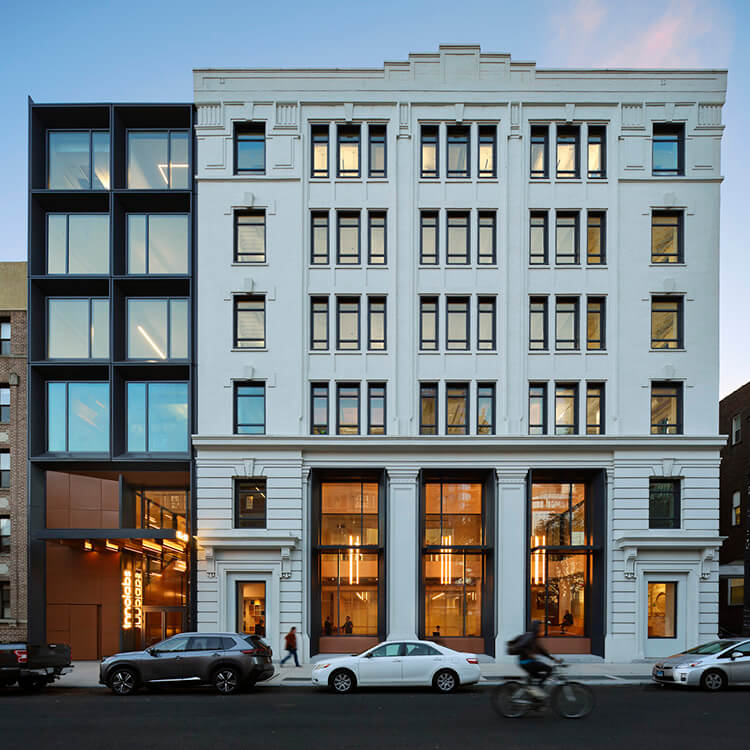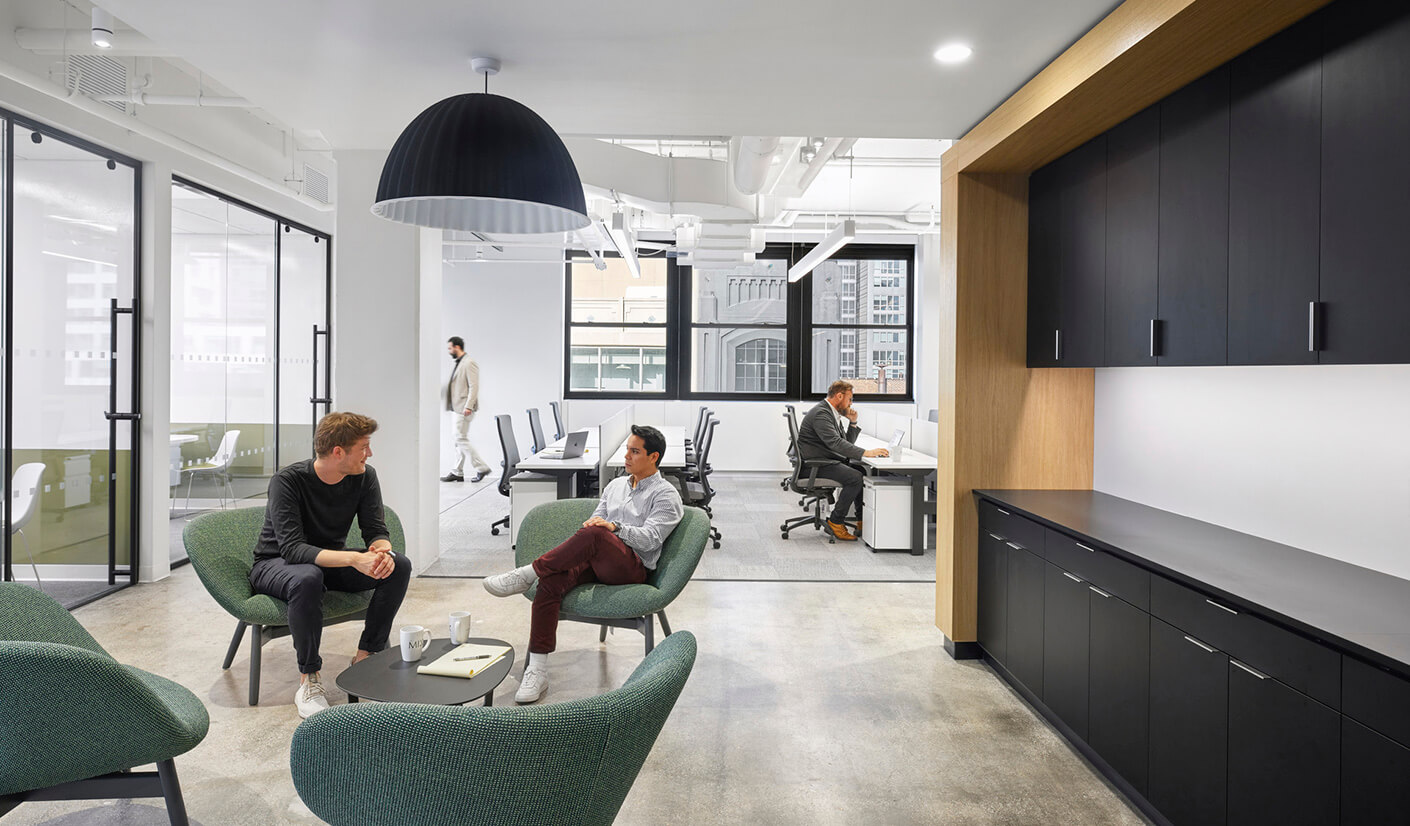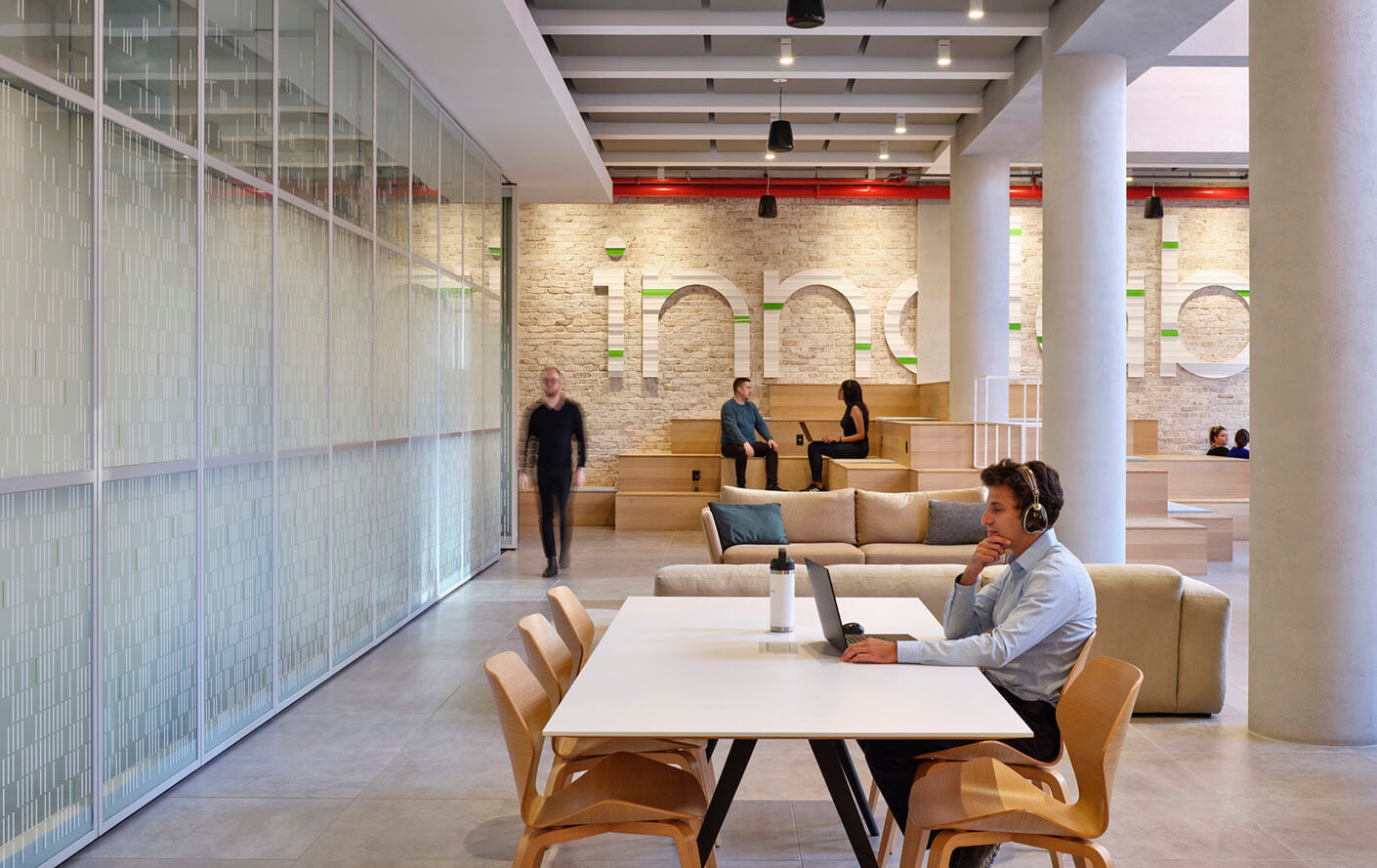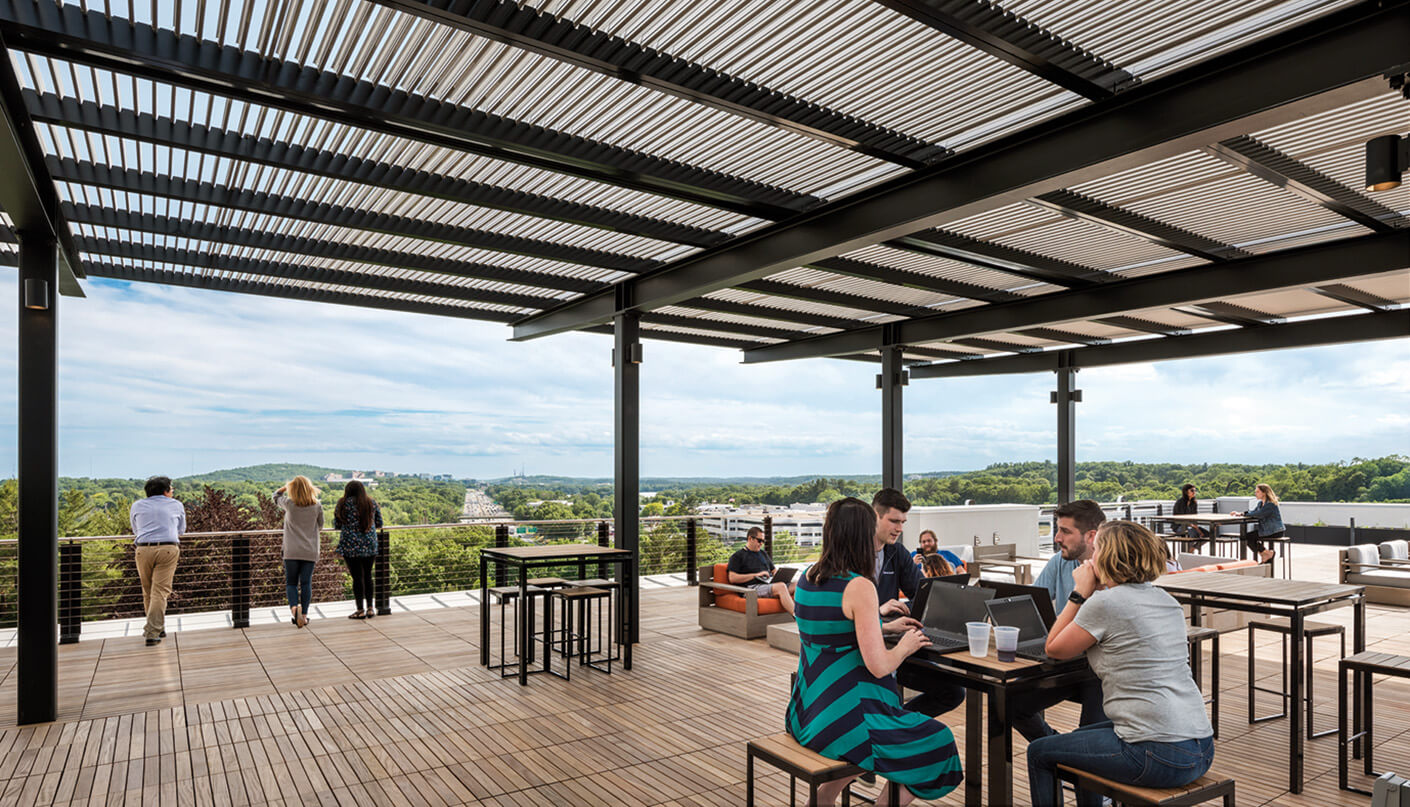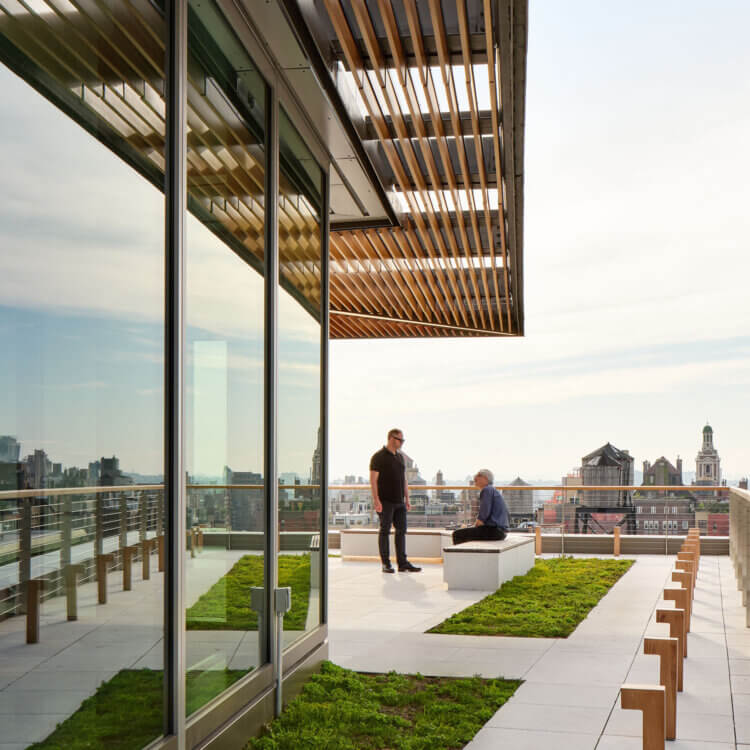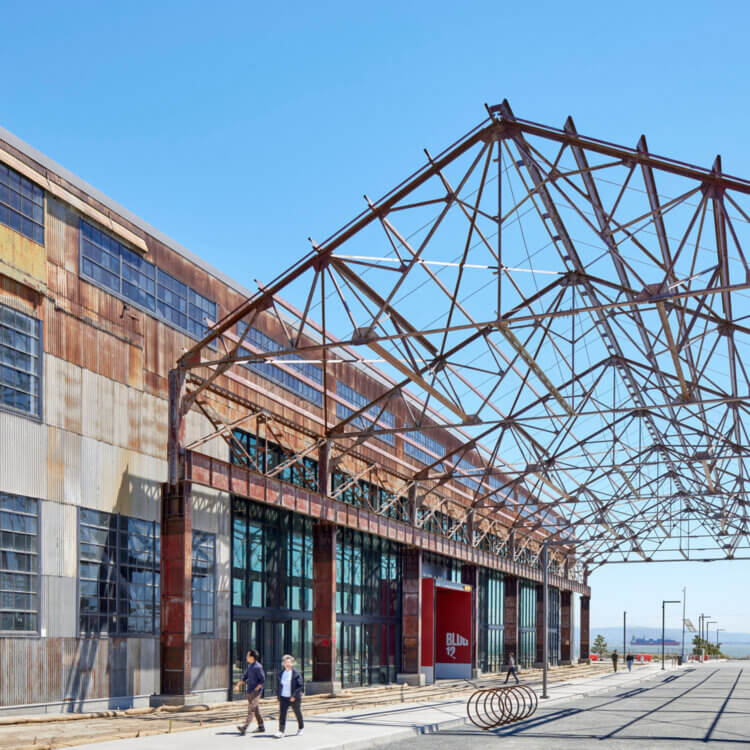In a 2022 report, McKinsey calls out decarbonizing real estate assets and portfolios as one of three actions that are necessary to thrive in the era of climate change. (The other two are accounting for climate risks in asset and portfolio valuations, and creating new sources of value and revenue through measures like on-site energy generation and storage.)
Decarbonization also helps developers bolster their ESG (environmental, social, and governance) efforts, which is increasingly important to investors. Repurposing offers a leg-up on the journey to a decarbonized built environment. First, reusing an existing structure reduces embodied carbon from new building materials. Second, the time and cost savings associated with it can be reinvested in highly sustainable mechanical, lighting, plumbing, and other systems to bring the project up to current performance standards. The labs in Davis Square Plaza, for instance, are aiming for LEED Platinum certification, while Innolabs and 191 Spring are both LEED Gold. These ratings are partly the result of reuse, partly the result of new energy-efficient technology.
“The biggest knock on repurposing is the buildings themselves were not built to the same energy efficiencies as modern infrastructure,” Malone says. “What we’re doing is introducing new systems—like air source heat pumps—that are taking the negative stigma about retrofits not being able to perform out of the equation. Reusing an existing building saves more resources than any other means of building. It already has carbon capture associated with it because you don’t need to introduce new materials.”
